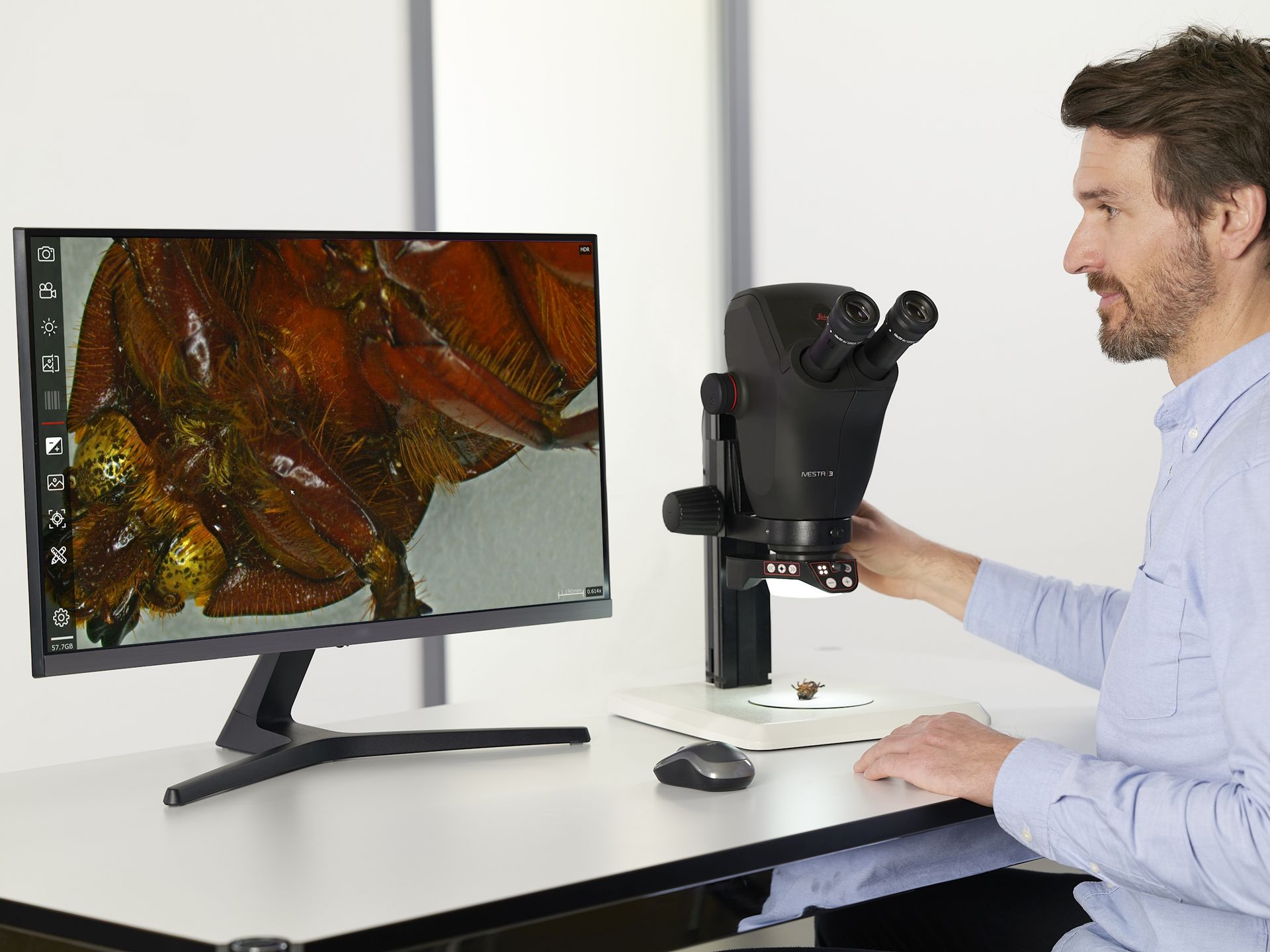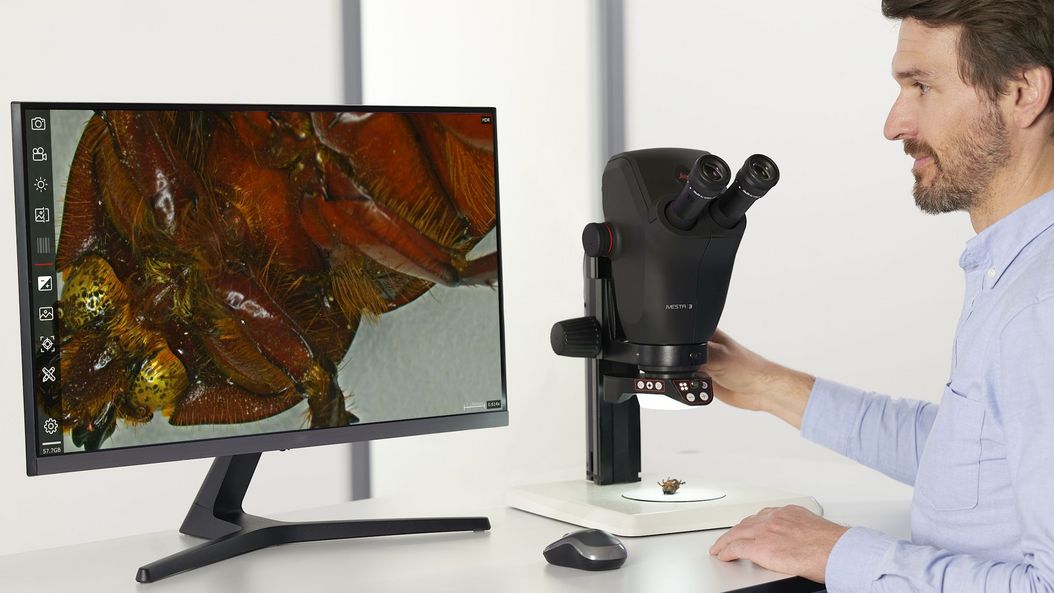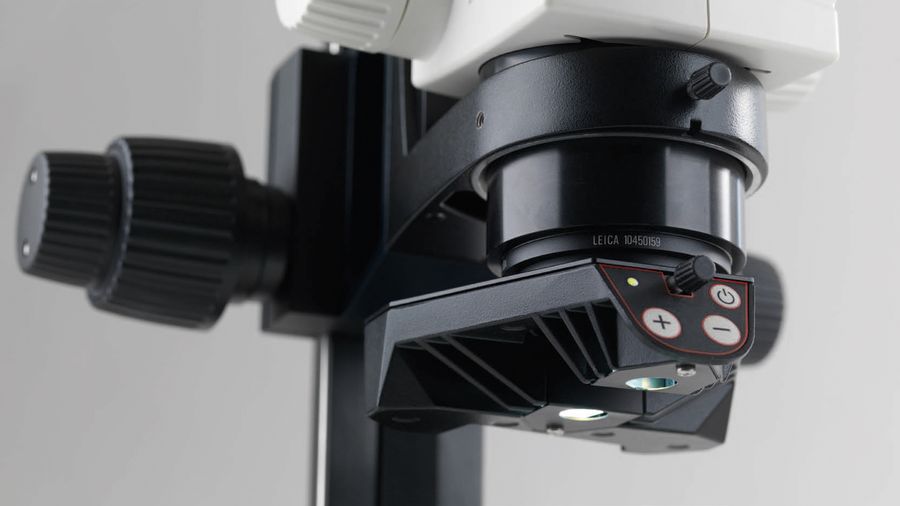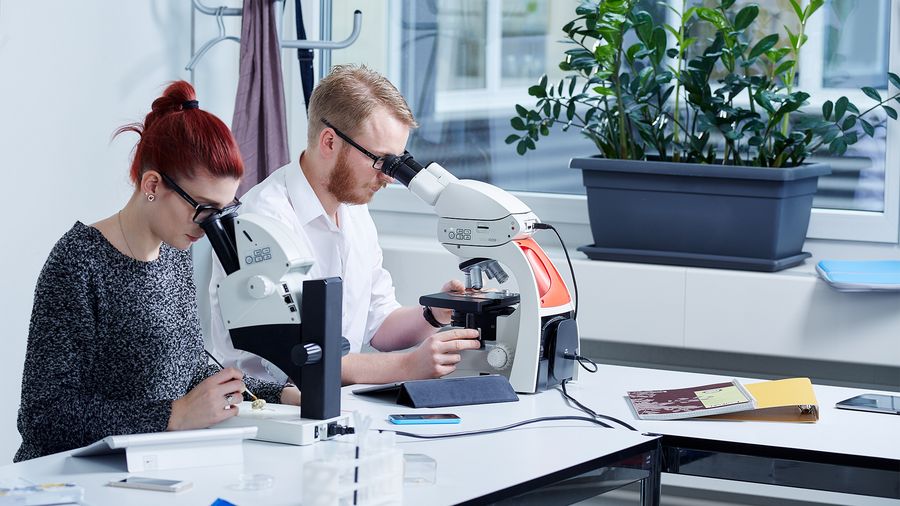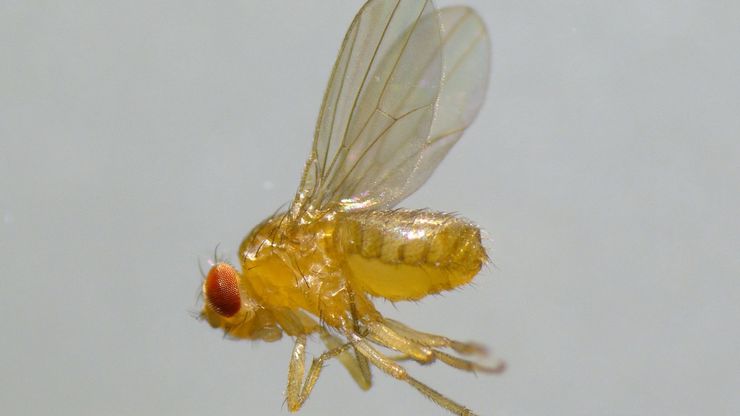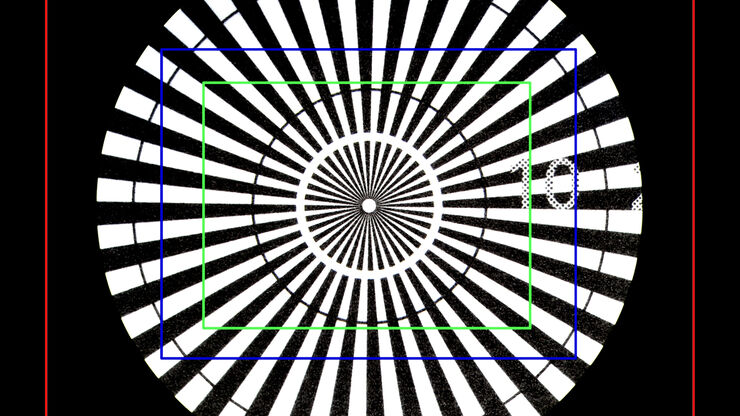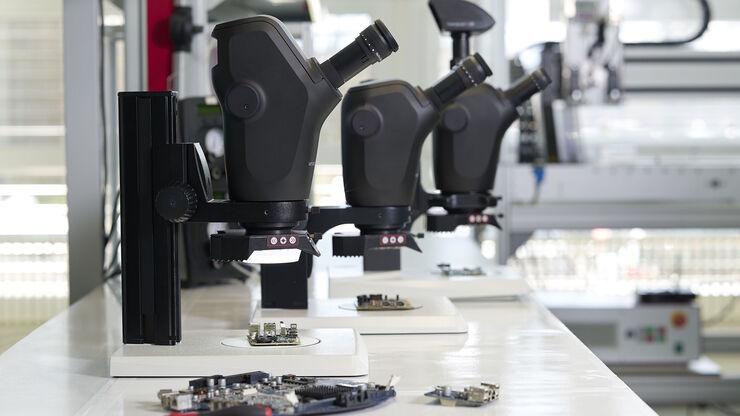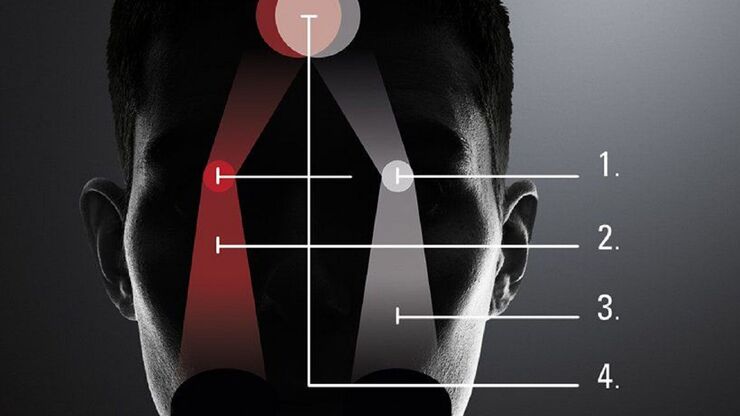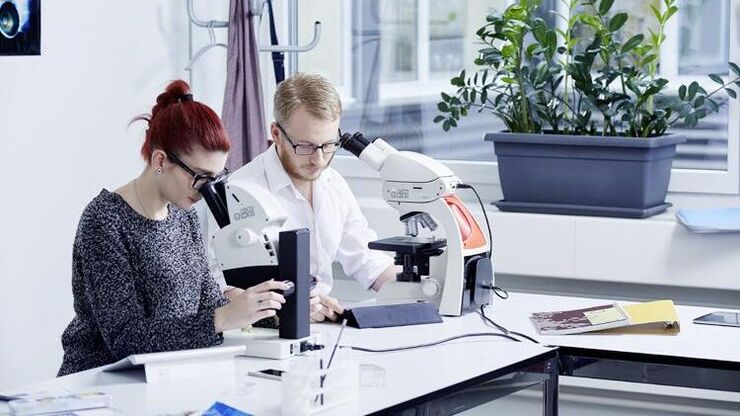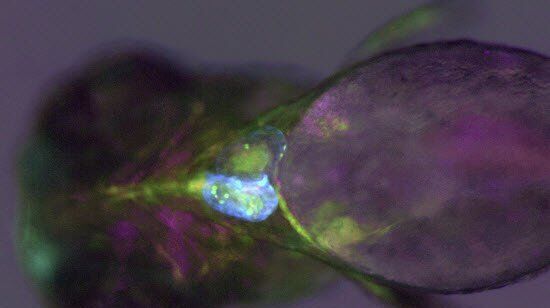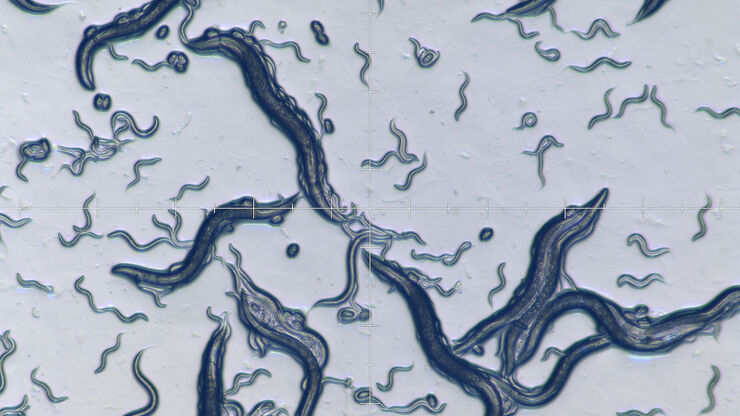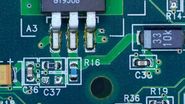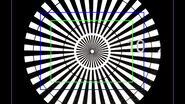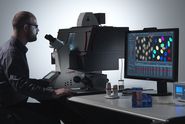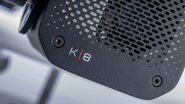A key instrument for your laboratory or classroom
The selection of the right dissecting microscope for the hours you, lab members, or students may spend doing dissection is key to long-lasting, satisfactory use. Dissection is very often done with a stereo microscope. Leica stereo microscopes are compact, rugged, and easy to use, making them practical for laboratory and classroom settings. Users can focus on their observations and experiments. Dissecting microscopes with a digital camera are valuable for documentation of observations in laboratories or classrooms.
What is a dissecting microscope used for?
A dissecting microscope is used to perform dissection of a specimen. It simply gives the person doing the dissection a magnified view of the specimen with a 3-dimensional perspective. Depending on the magnification and resolution used, more fine details can be visualized.
Stroke and cancer research
Improvement in stroke and cancer treatment methods depend on advances made from laboratory research. Rats and mice are the most common mammalian model organisms used for such research. An indispensable tool for any stroke or cancer laboratory is a dissecting microscope.
Education
Leica dissecting microscopes are used for education in classrooms and laboratories of schools and universities around the world. The microscopes offer high-quality optics and illumination and sufficient space under the objective for easy access to and handling of the specimen. They are also student-friendly in terms of setup, use, and storage.
What should you look for when selecting a dissecting microscope?
Here are some key factors to consider when choosing a dissecting microscope:
- Clear view of the specimen and its targeted area is important, therefore bright illumination in the field of view from proper light sources and high transmission optics;
- Sufficiently large area of the specimen must be seen which is best attained by having a large field of view, whether using eyepieces or a camera;
- Plenty of space to work with utensils under the objective is necessary which requires a large working distance, i.e., the distance between the objective’s front lens and the top of the sample when it is in focus (decreases as magnification increases);
- No obstructions for your hands or utensils when working under the objective and a comfortable posture while working are important to avoid strain on the neck, back, and arms, so it is useful to have an ergonomic setup;
- Versatile and easy-to-set-up microscope configuration saves users time, reduces stress, and allows it to be used for multiple tasks.
Whether your requirement when using a dissecting microscope is working distance, magnification, field of view, illumination, high resolution, depth of field, or high-quality optics, Leica Microsystems can provide the solution that best fits your needs.
Related articles
A Guide to Using Microscopy for Drosophila (Fruit Fly) Research
Depth of Field in Microscope Images
Understanding Clearly the Magnification of Microscopy
Key Factors to Consider When Selecting a Stereo Microscope
What is the FusionOptics Technology?
Rodent and Small-Animal Surgery
Factors for Selecting Student Microscopes
Imaging and Analyzing Zebrafish, Medaka, and Xenopus
Investigating Fruit Flies (Drosophila melanogaster)
Studying Caenorhabditis elegans (C. elegans)
Do you need to document your dissection work?
Dissecting microscopes equipped with digital cameras make the documentation process for dissection in laboratories or classrooms straightforward. The use of digital microscope cameras simplifies the imaging process, allowing for quick and efficient capture and processing of images. The LAS X and Enersight software supports users by facilitating the visualization, documentation, measurement, and archiving of digital images. The LAS X software is modular, enabling users to add specific functions for advanced applications. Additionally, digital microscopy can make dissection ergonomic, reducing strain during long hours of work.
Are multiple people using the same dissecting microscope and do they spend long hours working with it?
Every user is different, so it is advisable to have a dissecting microscope which can be adjusted to each user’s needs. In this case, microscope ergonomics is crucial, as it directly impacts user comfort and efficiency. Ergonomic features, like adjustable viewing height and angle of the eyepieces, help reduce strain of the shoulder and neck muscles. Using chairs and tables which can be adjusted to user preferences is also crucial for maintaining a comfortable posture during dissection work. These ergonomic features collectively help improve the well-being, motivation, and performance of microscope users, enhance their comfort throughout the workday, and enable dissection to be done more efficiently.
What is the difference between dissection and laser microdissection (LMD)?
Dissection and microdissection require different types of microscopes. Normally, microdissection is performed with a laser which is known as laser microdissection (LMD). LMD is a non-contact method, ensuring minimal contamination. This technique uses a focused laser beam to isolate specific cells or tissue regions from a sample via a microscope. It is highly precise and allows researchers to extract individual cells or specific areas without contamination from the surrounding material. It is commonly used for molecular analysis, such as DNA, RNA, or protein studies, as it preserves the integrity of the biological material.
Frequently asked questions dissecting microscopes
A dissecting microscope, also known as a stereo microscope, is used to perform dissection of a specimen or sample. It simply gives the person doing the dissection a magnified, 3-dimensional view of the specimen or sample so more fine details can be visualized.
Stereo microscopes are always used to perform dissections of a specimen or sample, therefore, they can also be called dissecting microscopes. As stereo microscopes use 2 light channels, 1 for each eye, they give the observer a magnified, 3-dimensional view of the specimen or sample. This ability makes them practical to use for dissection.
We have adapters for all C-mount compatible cameras.
Yes, use of a 3rd party software is possible: https://www.splashtop.com/classroom
Leica microscopes are modular and can be configured to best fit your needs. In case your needs change later, you can always upgrade your microscope by adding available accessories.
There are a lot of microscope accessories. . For more info refer to: https://www.leica-microsystems.com/products/microscope-accessories
Ergonomic accessories help users perform dissections in comfort, even if they spend long hours working with a microscope. Leica accessories allow you to adapt the dissecting microscope to your individual needs, allowing you to dissect more efficiently and comfortably. There is a range of ergonomic accessories for Leica microscopes. For more details refer to: : https://www.leica-microsystems.com/products/microscope-accessories/ergonomics
